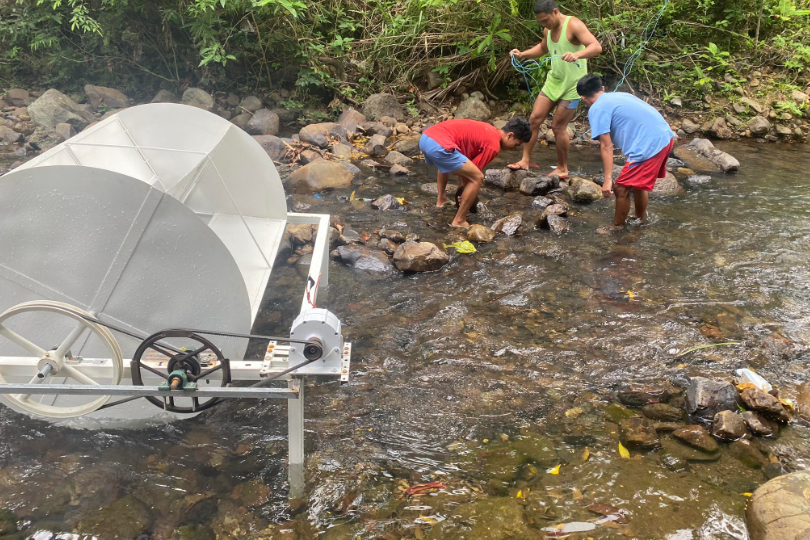CSS Engineers Deploy Experimental Micro Hydroelectric Power System
ON 10/06/2024 AT 01:38 PMClimate Survival Solutions, Inc., has successfully deployed a prototype small scale hydroelectric power system which can provide backup power for rural communities in the Philippines.

In many areas of the world, particularly in rural areas and in developing countries, a regular and stable supply of electrical power is still a challenge.
With most of the power grid focused on providing power to the industrial sectors and urban areas, the interior communities have experienced little to no improvement in the power supplied to them. The said issue is quite apparent in the provinces of the Philippines. With most of the resources focused on the cities and the economic disadvantages of connecting some rural communities to the grid, people have been yearning for an inexpensive and stable off-grid system they can rely on for their energy requirements.
One of those areas is the town of San Isidro, located in Northern Samar. It is the third largest island in the over 7,000 islands which make up the Philippine archipelago, and is located in the Eastern Visayas (central) region of the country.
CSS engineers came to this region to determine if they could create a low-cost reliable solution for generating power from “off the grid”, with the potential that if it were to function effectively, it could provide incremental power as needed.
San Isidro proved to be an interesting choice for investigating new technologies for renewable power generation. Known as the waterfall capital of Northern Samar, it contains a vast number of river channels extending from the mountains to the oceans. What it doesn’t have are roads to bring power to the rural communities in the town through conventional means. Running a line from the nearest connection to the conventional power grid can be expensive and hard to maintain. And with rain and overcast skies more common, solar panel options are not always the best way to provide off grid power.
With these ideas in mind, Climate Survival Solutions Philippines team chose to deploy something very different than is commonly used in these environments. What they did was to design a lightweight but still rugged waterwheel-based hydroelectric turbine, which could be lowered into one of the many river channels in the San Isidro area. The rotation of the waterwheel would generate electrical power, which could then be relayed either to a battery backup system or routed more directly to where it was immediately needed.
One important aspect of the design is that it can be easily removed from the stream in the event of a flood. Flooding makes many other micro-hydro designs unfeasible.
The prototype solution the team “rolled out” was designed to deliver 1 kilowatt of power under normal water flow conditions on a stable basis. As with any reliable engineering design, the process of creating this system involved rigorous calculations and testing. With the help of locals to construct and set up the final version of the system, the CSS team was able to install it and demonstrate it produced the 1 kW of electricity as designed.
Though that 1 kilowatt of electrical power might seem small, it is more than enough to power the needs of typical small homeowners living alongside the San Isidro riverbank. Combined with sufficient battery storage capacity, that 1kw can support household appliances that draw far more for limited periods.
Paul Custan, one of Climate Survival Solutions' engineers based in Samar, supervised the design, construction, and testing of the system.

